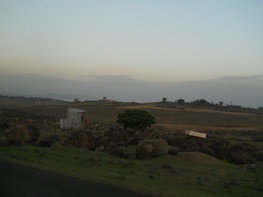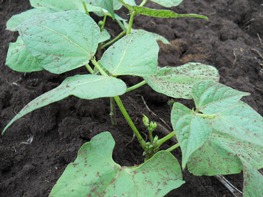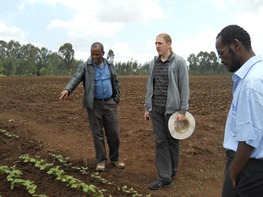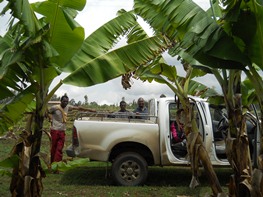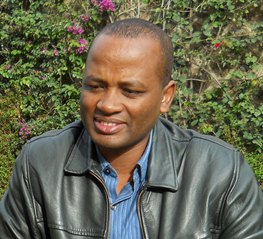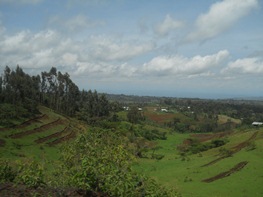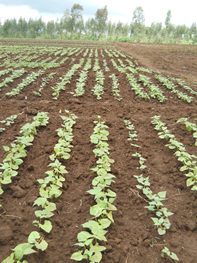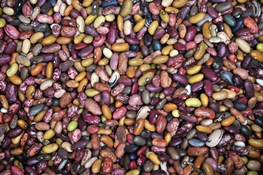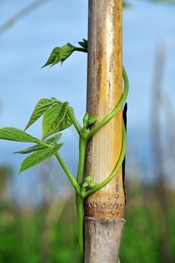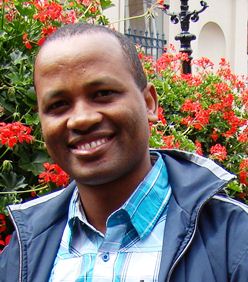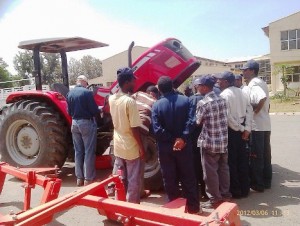Meet Sigrid Heuer (pictured), a Molecular Biologist and Senior Scientist at the International Rice Research Institute (IRRI). Her lively and riveting story will take us from Africa through her native Europe and on to Asia, and finally Down Under to Australia.
Origins – the African chapter
Africa holds a special and soft spot in Sigrid’s love affair with science: it was while on this continent that she realised her calling in life as a scientist – linking people doing pure research on plant genes to help plants survive and even thrive in harsh environments, with people who want to apply that knowledge to breed crops that can change the lives of millions of farmers who constantly compromise with nature to make a living.
“Working as a postdoc at the Africa Rice Center in Senegal was a real life-changing experience,” Sigrid recollects with great fondness. “It’s where I found my niche, using my background in theoretical science and applying it to developing crops that could overcome abiotic stresses, and in doing so, make a real impact on people’s lives.”
Rowing further down the river: from upstream to downstream science
Sigrid was born and raised in Hamburg, Germany. She remembers wanting to be a psychologist and didn’t consider science until a few years after finishing school. After completing a biology undergraduate at Phillips University, Marburg, Germany, she returned to her home city of Hamburg to complete a Masters and PhD in plant physiology and molecular biology respectively.
“Back then, I was really involved in upstream science, fascinated in the fine details without much consideration of how such research could benefit society,” says Sigrid. “I still enjoy this form of science and really do value its purpose, but putting it into practice and focusing on the impact that it can have is what really motivates me now.”
Moving to IRRI, and meeting Pup1 and GCP
After three years in Senegal, Sigrid moved to the Philippines to join IRRI in 2003, first as a consultant then as a part-time scientist. In these early years, she was working on several projects, one of which was the GCP-funded Pup1 (rice phosphorus uptake) project.
“The project sought to identify the genes associated with phosphorus uptake in rice lines that could tolerate phosphorus-deficient soils,” says Sigrid. “It was an interesting project in which I was able to use my background in molecular biology. Little by little, I got more and more involved in the Pup1 project and after a year I was asked by Matthias Wissuwa, who was leading the project at the time, if I wanted to take it over. It was a great opportunity which I jumped at, not knowing then how challenging it would prove.”
Pup1 was the first major project I had managed. It was a playground of sorts that allowed me to learn what I needed to know about managing a project – writing proposals and reports, managing budgets and people’s time, and everything else that comes with leading a team.
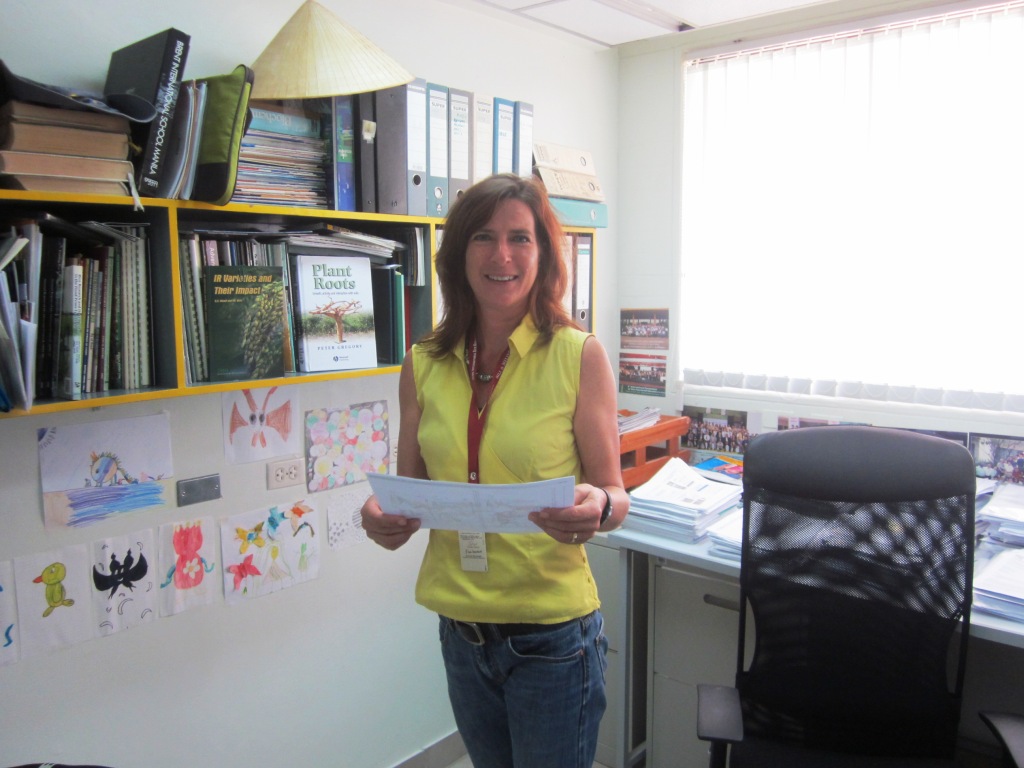
The ‘root’ and ‘command post’ where it all happens: Sigrid in the office. For the benefit of our readers, we would have credited the young artist whose colourful work graces the background below the bookshelf, but we were too polite to pry and prise out the young talent’s name, having hogged too much of Sigrid’s time already!
Learning to lead – both work and play
Over the last seven years, Sigrid has been a Principal Investigator and joint leader of the project, which has given her latitude to mature professionally, and not just in science alone. “It’s been tough but personally fulfilling,” Sigrid says, with just a touch of exhaustion.
“Pup1 was the first major project I had managed. It was a playground of sorts that allowed me to learn what I needed to know about managing a project – writing proposals and reports, managing budgets and people’s time, and everything else that comes with leading a team. I was really lucky to have Matthias’ help as well as the other experienced collaborators and networks. However, the main factor that made my job a lot less stressful, was the benefit of long-term funding and support from GCP. GCP was always there, supporting us and giving us confidence even when we weren’t sure we were going to succeed.”
Persistence pays: tangible products, plus publication in Nature
In August 2012, Sigrid and her team achieved what they had set out to do seven years ago, through what Sigrid puts down to sheer persistence: their discovery of the Pup1 gene was recognised by their scientific peers and published in the highly renowned journal, Nature.
“Having our paper published is really something special and personally my greatest achievement to date,” says Sigrid, but she is also quick to add that it was a team achievement, and that the achievement was in itself humbling.
“It was a double reward for persisting with the research, and with getting it into Nature. We wanted it in Nature for several reasons. To raise awareness on phosphorus deficiency and phosphorus being a limited resource, especially in poorer countries; and to draw attention to how we do molecular breeding these days, which is a speedier, easier and cost-effective approach to developing crops that have the potential to alleviate such problems.”
Sigrid hopes the article will have a lasting impression on readers, and encourage funders to continue to support projects that have such impact on the lives of end-users.
What next? Technology transfer, transitions and torch smoothly passing on…
With the Pup1 gene now found, IRRI researchers are working with breeders from country-based breeding programmes around the world to help them understand the techniques to breed local varieties of rice that can grow in phosphorus-deficient soils. They are also collaborating with other projects that wish to use the Pup1 project as a case study for phosphorous deficiency tolerance in other crops like maize, sorghum, and wheat (see an example here, that includes partners from Africa and Latin America).
Sigrid sees this next stage as a perfect time to step down from the project: she plans to move to Adelaide, Australia at the end of 2012 to lead a new project that is looking at drought and nitrogen deficiency tolerance in wheat.
“Matthias passed the baton on to me, and now I get to pass the baton on to someone else, so it’s nice. And I’ll be sure to always be around to help them too.”
Links
- VIDEO: Sigrid’s interview on BBC News, August 2012, on the discovery of the rice gene that boosts phosphorus uptake
- PHOTO STORIES − Choose your favourite medium! We post to both Flickr and Facebook
Sigrid’s presentation at the GCP General Research Meeting 2011










